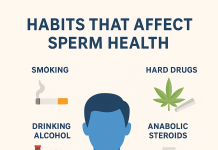No kidding—high heels can be hell. Cramming your feet into pointy-toed shoes can lead to a laundry list of foot problems: calluses, hammertoes, bunions, plantar fasciitis and neuroma (a tingling, burning or numbness in the foot) and many more.
What’s more, high heels can throw your body alignment out of whack. Your feet are the foundation for your entire body, and when you walk in heels, you change your center of balance.
Your feet slides forward into the shoe when you slip into a pair of high heels. The increased weight on the balls of your feet causes your pelvis to tilt forward. To compensate, you lean backwards, increasing the arch in your lower back, which puts a strain on your lumbar spine, hips, and knees. The higher the heels, the greater the strain.
The Bad
It has long been suspected that so many women suffer painful knees later in life because of footwear.
By 65, about twice as many women as men have arthritic knees and the likes.
High heels impact your body beyond just making you want to sit down.
Normally, your feet act like spring-loaded, weight-distributing shock absorbers, cushioning your skeleton from crazy amounts of pounding. The higher the heel, the bigger the impact: one study found that four-inch stilettos can up the amount of pressure on the front of the foot by 30 per cent or more.
Wearing heels forces your ankles to bend forward, a movement that could restrict circulation in your lower limbs. If you are a perennial high heel wearer, this could eventually spider veins. Walking in heels also stiffens your Achilles tendons, which anchor your calf muscles to your heels, causing your calves to bunch up.
The knee is the largest joint in your body. It is built to take a licking, but frequent high heels use can put extra stress on the inner sides of the knees, fast-tracking the wear and tear that leads to osteoarthritis.
The Good
Though the side effects of heels are quite numerous and scary, you really don’t have to give up on them as they do have a good side also. If minimized, the wearing of heels could have a positive benefit.
Narrow, stiletto-type heels provide little support and three inch or higher heels may shorten the Achilles tendon. Selecting shoes with low heels would help spread the load more evenly.
It aids in proper stretching also. If not worn for a very long time, the impact of the heels helps in stretching your legs by raising them up.
It also aids in proper balancing of the body. Most women who wear high heels find it easy to stand properly in difficult situations. Dancing with heels helps build muscles.
The Uplifted
As stated, High heels uplifts. It is quite obvious that a pair of heels will add height on to the wearer, but it is the number one reason why women around the world wear high heels. Women may want to add height in a number of different situations. They may want to match their height to a taller date. Petite women especially use high heels to overcome their natural stature.
High heels enhance confidence:
Wearing high heels can make a woman feel more confident. This is due to a number of reasons. For one, high heels enhance almost any outfit. Additionally, high heels can make a woman look more assertive, which in turn makes her feel more confident.
They accentuate a woman’s legs:
One of the benefits of high heels is that they make a woman’s legs look amazing. Wearing high heels changes one’s posture and can make a woman’s legs look longer and leaner. Not only do wearing high heels give the look of long and sexy legs, but they can also tone a woman’s leg muscles. Additionally, they improve the entire look of a woman’s body by improving how she carries herself when she stands and walks.
There are good reasons to wear high heels. They can add height and make a woman feel more confident. They always garner favorable attention and they give the appearance of long, lean legs.
Culled from ; livestrong.com











